How To Control Spider Mites
Home » Blog » How To Control Spider Mites
Spider mites are tiny pests that pose a significant threat to a wide variety of plants. They can damage both indoor and outdoor plants by sucking the sap out of the leaves, causing discoloration, wilting, and in severe cases, plant death. Controlling spider mites can be challenging due to their small size and rapid reproductive rate. However, understanding their life cycle, identifying early signs of infestation, and implementing effective control measures can help protect your plants from these damaging pests.
Spider mites have a rapid life cycle, which can complete in as little as a week in optimal conditions. Understanding their life cycle is crucial for effective control. They start as eggs on the underside of leaves, hatch into larvae, and then progress through two nymph stages before becoming sexually mature adults. A single female can lay hundreds of eggs, leading to a quick population explosion.
There are several methods to control spider mites. These include:
1. Cultural Control :
This involves maintaining the health of your plants, as healthy plants are less likely to suffer significant damage from spider mites. Regular watering and proper fertilization can help keep your plants robust and resilient.
2. Physical Control :
This includes manually removing the mites from your plants. For small infestations, wiping the leaves with a damp cloth or spraying the plants with water can dislodge the mites.
3. Biological Control :
This involves introducing natural enemies of spider mites, such as ladybugs and predatory mites, into your plant environment.
4. Chemical Control :
In severe cases, it may be necessary to use miticides or other chemical treatments. However, these should be used as a last resort due to the risk of developing resistant mite populations and the potential harm to beneficial insect
Controlling spider mites can be a daunting task due to their small size and rapid reproduction rate. However, by identifying the signs of an infestation early, understanding the rid of spider mites’ life cycle, and applying effective control measures, you can protect your plants from these destructive pests. Remember, prevention is always the best strategy, so keep your plants healthy and monitor them regularly for signs of spider mites.
Spider Mites
Spider mites, belonging to the family Tetranychidae, are tiny but mighty pests that can wreak havoc on a broad spectrum of plants. These arachnids, notorious for their destructive feeding habits, can inflict significant damage in both indoor and outdoor environments. Understanding the disadvantages or implications of spider mite infestations is vital for plant owners, gardeners, and farmers alike, as it allows them to implement effective control measures. Here are some of the most common signs and impacts of spider mite infestations:
1. Leaf Discoloration and Damage
The first sign of a spider mite infestation is often the appearance of tiny, light-colored spots or stippling on the leaves of the plant. This is the result of the mites piercing individual plant cells and sucking out their contents. As the infestation progresses, the leaves may turn yellow or bronze and eventually fall off.
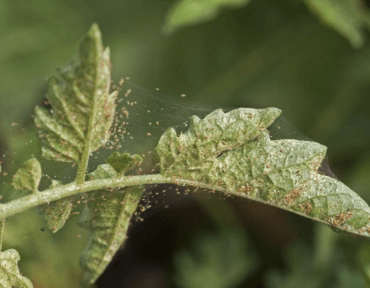
2. Webbing
Spider mites get their name from their habit of spinning fine, silk-like webs on the undersides of leaves or across plant tips. This webbing can protect the mites from predators and some pesticides, and its presence is a strong indication of a heavy infestation.
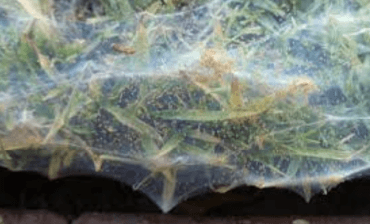
3. Plant Deformation
In severe infestations, spider mites can cause stunting or deformation of plant growth. New leaves might be smaller than usual, or the plant may have a generally unhealthy, stunted appearance.
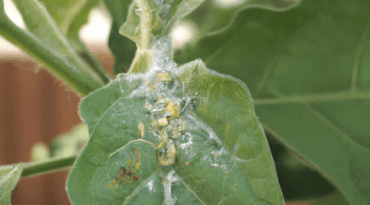
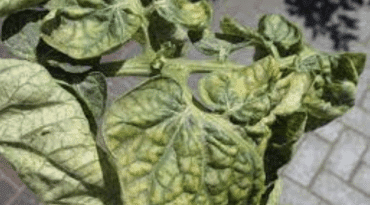
4. Loss of Vigor
Infested plants often lose vigor and grow more slowly. This is particularly problematic in crop plants, where it can lead to a significant reduction in yield.
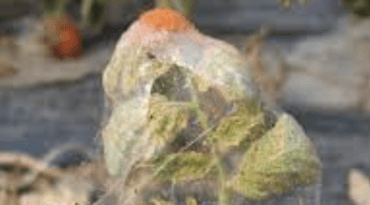
5. Plant Death
In extreme cases, if left untreated, spider mite infestations can kill plants. This is more likely in young plants or those already weakened by disease, drought, or other stress factors.
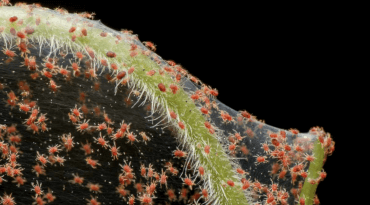
6. Spread to Other Plants
Spider mites can rapidly spread to other nearby plants, either by crawling or by being carried on wind currents. This can lead to widespread infestations in greenhouses, gardens, or fields.
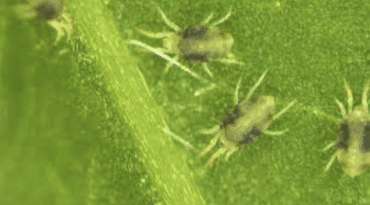
7. Resistance to Pesticides
Many spider mite species have developed resistance to common pesticides due to their rapid reproduction rate and the widespread use of these chemicals. This can make controlling infestations particularly challenging.
The disadvantages of spider mites are manifold, from direct damage to plant health to potential economic losses and threats to biodiversity. Their rapid reproduction and potential resistance to pesticides further complicate control efforts. Therefore, it’s crucial for anyone involved in plant care or cultivation to understand these disadvantages of spider mite population and take proactive measures to prevent and control spider mite infestations.
Spider Mite
Spider mites, despite their diminutive size, are formidable pests known to wreak havoc on a wide array of plant species. These microscopic arachnids, belonging to the Tetranychidae family, are notorious for their destructive feeding habits and rapid reproduction rate. Understanding the biology, behavior, and impact of spider mites is crucial for anyone involved in plant care and cultivation.
Spider mites are tiny, typically less than 1mm in size, and can vary in color from red and brown to yellow and green. Despite their small size, they can be identified by the distinctive, silk-like webs they weave on the undersides of leaves. They have a short life cycle, often completing it in just a week under optimal conditions. A single female can lay hundreds of eggs during her lifespan, leading to rapid population increase.
Spider mites feed by piercing the plant cells and sucking out the contents, which leads to distinctive damage. Initial signs of infestation include small, light-colored speckles appearing on the leaves. As the infestation of pest mites progresses, leaves may yellow and wilt, and severe infestations can lead to plant death.
Managing spider mites can be a challenge due to their quick reproductive rate and potential resistance to pesticides. Control methods include maintaining plant health, manually removing mites, introducing natural predators like ladybugs, and as a last resort, using chemical treatments. Early detection and prompt action most spider mites are key to preventing significant damage.
Spider mites, while small, pose a significant threat to a wide variety of garden plants. Their rapid reproduction and damaging feeding habits can lead to severe plant damage and significant yield loss for commercial growers. However, with an understanding of their biology and behavior, along with effective control strategies, it is possible to manage and mitigate the impact of these tiny but destructive pests.
Twospotted Spider Mite
The twospotted spider mite, scientifically known as Tetranychus urticae, is one of the most widespread and destructive species within the Tetranychidae family. These tiny arachnids, notorious for their voracious feeding habits and rapid reproduction rate, pose a significant threat to a wide range of plant species across the globe. Understanding the biology, behavior, and impact of this particular spider mite species is crucial for effective pest management.
Twospotted spider mites are minuscule, typically less than 1mm in size. They derive their name from the two dark spots on their body. They can vary in color, but are often greenish or yellowish. Their life cycle is rapid, especially in warm conditions, allowing populations to increase exponentially in a short period. A single female can lay hundreds of eggs in her lifetime, leading to swift population growth.
Twospotted spider mites feed by piercing plant cells and sucking out the contents, causing distinctive damage. The initial indicators of an infestation include small, light-colored speckles appearing on the leaves. As the infestation progresses, leaves may turn yellow, wilt, and eventually fall off. Severe infestations can lead to plant death.
Controlling twospotted spider mites can be challenging due to their quick reproductive rate and potential resistance to pesticides. However, there are several effective strategies, which include maintaining healthy host plants throughout, physically removing mites, introducing natural predators like ladybugs or predatory mites, and using miticides or other chemical treatments as a last resort. Early detection and prompt action are crucial to prevent significant damage.
The twospotted spider mite, while tiny, presents a substantial threat to a vast array of heavily infested plants. Its rapid reproduction and damaging feeding habits can lead to severe plant damage and significant yield loss for commercial growers. However, with a comprehensive understanding of its biology and behavior, along with effective control strategies, it is possible to manage and mitigate the impact of these destructive pests.
Predatory Mites
Predatory mites, often lauded as the gardener’s secret weapon, play an invaluable role in maintaining the balance of our ecosystem. These natural enemies of many destructive pests, including spider mites, aphids, and thrips, are a crucial part of biological pest control strategies. Understanding their biology, behavior, and benefits can help individuals and industries alike to exploit their potential for sustainable and effective pest management.
Predatory mites belong to several families, including Phytoseiidae and Ascidae, among others. They are tiny arachnids, often microscopic and come in various colors, shapes, and sizes depending on species. These mites have a relatively short life cycle, allowing them to rapidly respond to increases in prey populations.
Predatory mites are voracious eaters, feeding primarily on other smaller arthropods, including various pest species. For instance, Phytoseiulus persimilis, a type of predatory mite, is known for its appetite for two-spotted spider mites. By preying on these pests, predatory mites help control their populations, preventing infestations that could otherwise cause significant damage to ornamental plants. Here are some key advantages of these tiny but mighty creatures:
1. Natural Pest Control
Predatory mites are voracious eaters, feeding on a range of pest species that are harmful to plants, including spider mites, thrips, and aphids. They can effectively control and reduce pest populations without the need for chemical pesticides.
2. Environmentally Friendly
Using predatory mites for pest control is an environmentally friendly solution. It reduces reliance on chemical pesticides, which can harm non-target organisms and contribute to environmental pollution.
3. Prevents Pesticide Resistance
Overuse of chemical pesticides often leads to pests developing resistance, making future control efforts more difficult. As biological control agents, predatory mites can help prevent this problem.
4. Cost-Effective
In many cases, introducing predatory mites can be more cost-effective than ongoing chemical treatments, especially in large-scale agricultural settings or greenhouses.
5. Quick Reproduction
Predatory mites reproduce quickly, enabling them to respond rapidly to increases in prey populations. This makes them an efficient solution for pest outbreaks.
6. Versatility
Different species of predatory mites feed on different types of pests, making them versatile tools in integrated pest management. Some species can even adapt to feed on pollen and other sources when prey is scarce, ensuring their survival.
7. Safety
Unlike chemical pesticides, predatory mites pose no risk to humans or pets. This makes them a safe option for pest control in homes, schools, and public spaces.
Predatory mites, despite their small size, pack a punch when it comes to pest control. Their voracious appetite for common pests, coupled with their rapid reproduction rate, makes them a formidable ally in the fight against plant pests. By harnessing the power of these natural predators, we can move towards more sustainable and effective pest management strategies, safeguarding our ornamental plants and ecosystems for future generations.



